 |
|
| Field Equipment
Alright, you've got the uniforms down. But, to fight, soldiers needed to be issued field equipment to get the job done. The list on this is seemingly endless. But, there are some basics that every soldier carried in to battle with him and it's these items that you should seek out first in starting out in reenacting. Once you get these, then you can feel free to get those wire cutters, signal wire spools, handie-talkie radios, demolitions bags, and so on.
Every infantry soldier is going to need something to carry his ammunition in. For the WW2 soldier, it was the Garand Belt, otherwise known as the Dismounted Cartridge Belt. This can be the 1910 or the 1923 styles, but should be olive drab/khaki.
You'll then want the M1928 Haversack, which was the 1940s style backpack. Actually designed and used in WW1, it's not the best design when compared to what the Army used in later wars, but it gets the job done. The Haversack hooks in to the Cartridge Belt and together they have a crude suspender/belt system. In no way does this distribute weight evenly.
An alternate to the Haversack is the M1936 Suspenders. These were more common with Armored Infantry (like us) who were able to stow away tents and personal gear on to the vehicles they were riding as opposed to the Foot Soldier who carried everything he needed on his back. If you can get this set, do it. But it is still very important to get the Haversack as every soldier had one, whether they needed to use it or not.
|
| |
Cartridge Belt |
Haversack |
Suspenders |
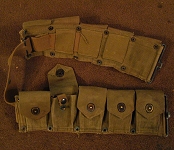 |
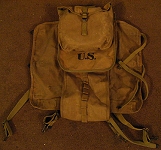 |
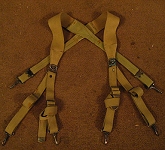 |
From this, all other things either go in to or hook on and suspend from. Next important items are your shovel, canteen set, first aid pouch, and your all important mess kit. You will need to get ALL of these and every G.I. in the war had them. And, you'll surely want a blanket. It'll help fill up the space in the Haversack and will keep you warm at night.
|
| |
T-Handle Shovel |
Canteens |
Carlisle Pouch |
 |
 |
 |
Wool Blanket |
Mess Kit |
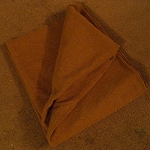 |
 |
| |
Additional Equipment
And that's the basic set-up (minus weapons, which we'll get in to in a bit). We recommend you acquire what's on this list first before stepping in to the following items because those are more appropriate for any time of the war. You'll look correct for events from 1942 to 1945. But, you and we both know it won't stop there. So here's some other things you can find to round out your kit and are still practical for our unit:
|
| |
Musette Bag |
Duffel Bag |
Folding Shovel |
Sleeping Bag |
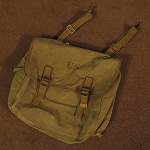 |
 |
 |
 |
Some people would list the Duffel Bag as being an important item. But, really, when it comes to what you take in to the field, the Duffel sits at camp. So, if you're on a budget, you can hold off on buying one unless the right one for the right price falls in to your lap. The Musette bag is actually something that hooks in to the M1936 Suspenders, so it's feasible you could go out with that. But, as far as basics are concerned, we recommending holding off on this purchase until you get the important ones we had listed. Sleeping bags and folding shovels are great, but they came in to play mid-war, around 1943-44. And, again, some troops didn't see these until much later than that. |
| |
Pick Mattock |
Pistol Belt |
Dust Goggles |
Bandolier |
 |
 |
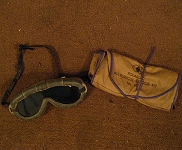 |
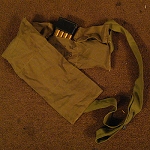 |
The Pick Mattock wasn't carried by all troops, but the Engineers were known to carry a few and usually someone in the platoon had one. Wirecutters (not pictured) we're issued to troops who needed them: Engineers, Signal Corpsmen, etc. The same with the Field Axe (also not pictured). The Pistol Belt was thrown in there so you could see it. Unless you were a Non-Commissioned or Commissioned Officer, you usually didn't get one of these. The exceptions were those issued the M1 Carbine, which had magazine clips that required a pouch to carry them. Also, Field Medics used them to hang their canteens and shovel off of. If you're going any one of those routes, it's not a bad purchase
We cannot overstate how great Dust Goggles are. For 2nd Armored, and any other unit on wheels, these goggles are wonderful at keeping EVERYTHING out of your eyes... which is what you'll get when speeding down a dirt road in a jeep with the windshield down. They're a tough and often expensive find, but well worth the price.
G.I.s liked to have three things on them. Warm and comfortable clothes, food in their bellies, and lots and lots of ammunition. The 10-pocket Cartridge Pouch goes real quick when you're pouring it on to the enemy. Thus, the Bandolier was developed for soldiers to carry in an additional 6 clips of ammunition. Get another one, you're bringing 22 clips of 8-rounds each to the fight. But, ask any vet. It never seemed like enough!
|
|

